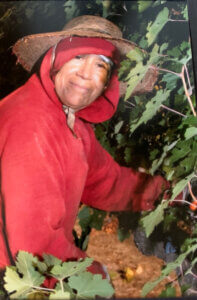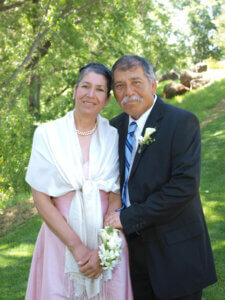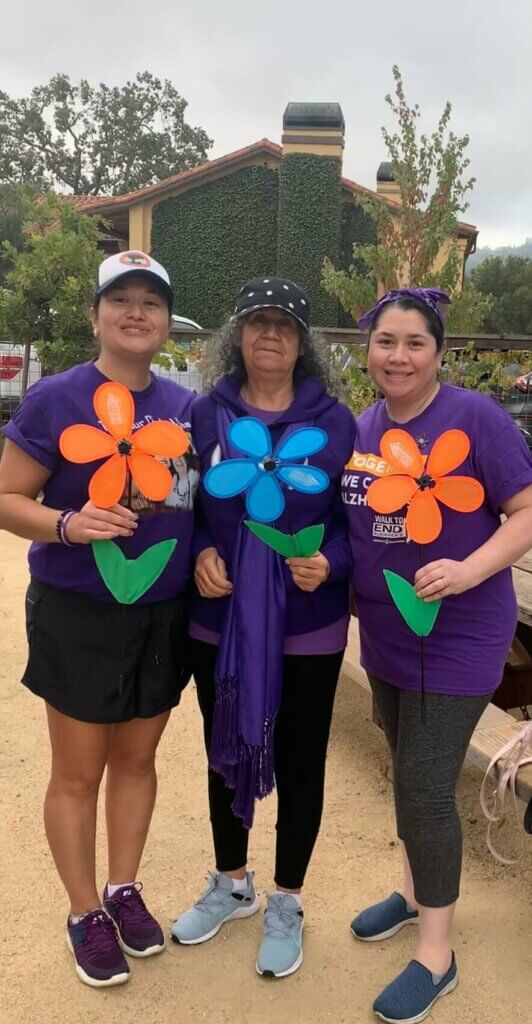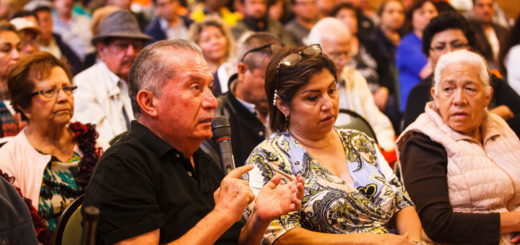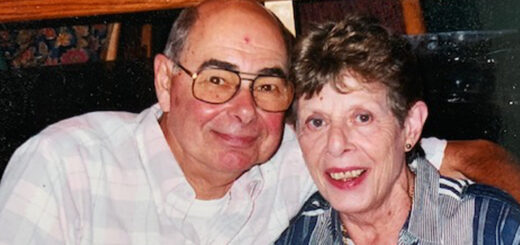Team Chula Licha walks in Napa Valley to honor Mom
Sandra Fuentes-Onoo lost her mother, Maria, to younger-onset Alzheimer’s in June. She and her family are participating in the Walk to End Alzheimer’s® – Napa Valley in honor of her mother. Sandra recently talked to us about her family’s Alzheimer’s journey and her hope for the future of Alzheimer’s research.
What motivated you to participate in Walk to End Alzheimer’s?
My mother, Maria Elisa Fuentes, was diagnosed with younger-onset Alzheimer’s at the age of 58. She died in June; she was 68 years old.
We went through every single cycle of the disease in the last few years. She transitioned through the cycles with grace.
Mom was a hardworking and strong-willed woman. She was born in Mexico and she came to the Napa Valley with my father right after they got married in January 1976.
She worked in the vineyards for over 40 years for the same employer. She was very loyal.
My mom never complained. Whether it was hot or cold, she would never call in sick. Her work ethic was out of this world.
She raised three kids and had four granddaughters. She was there for my siblings and I through the good and the bad. Her motto was “you need to work very hard for what you have but remain humble.”
Mom would come home after a long, hard day at work and cook meals from scratch for our family. She would make these phenomenal, authentic dishes for us to eat.
She was so selfless; we are very blessed. At her Rosary and her funeral services there was an outpouring of love. That’s when you really realize how much someone is loved.
My mom would make everybody feel welcome and she wanted to feed everybody and give them something to drink. Even if she wasn’t biologically related to you, you just felt her sincere, humble touch. You knew that she was a good person just by meeting her.
What were some of the first signs you noticed in your mom?
Mom would ask the same question, but it wasn’t noticeable unless you knew my mother extremely well. The person who told us was her coworker, who is also a family member. She had worked alongside Mom for many years.
She came over and told us that something wasn’t right. They would give Mom instructions, but when they checked later, Mom hadn’t done the work that they had asked her to complete.
It took about two years for us to decide that it was time to go to the neurologist because it was very subtle. Mom would ask the same question, but then she would say, “I’m just getting old and am tired, sad and depressed.”
She failed the evaluation at the neurologist’s office. When she had her first MRI, the doctor showed us the images. Seeing all of the protein build up was just something that blew our minds away.
The diagnosis was just absolutely heart wrenching because at that time we had no idea what dementia or Alzheimer’s was and what it would mean for our family.
After she died, we donated my mother’s spinal cord and brain to the research program at UCSF. We’re hopeful that they’re going to be able to tell us more about what occurred in her brain.
What services of the Alzheimer’s Association did you use?
I called the 24/7 Helpline (800-272-3900) a few times. I called to get resources when she started wandering. I called again towards the end when I couldn’t find a caregiver because of the COVID-19 pandemic.
I had requested courtesy cards to use when I took my mom out with me. The cards explain that your loved one has Alzheimer’s or another form of dementia and asks for the other person’s understanding.
It helped to explain her behavior. Sometimes when we would go to the store she would grab items from other people’s carts and they would be very offended. Passing out the cards helped.
What suggestions would you give to a family who was just starting this journey?
After my mom passed, we had a family friend come over and she let me know that they are noticing cognitive issues with her dad. I told her to always be one step ahead of the medical component.
When I would take my mom in for her appointments I would have already reviewed everything (e.g., lab results) and would be ready to be my mother’s advocate.
I would also tell people to take lots of pictures and videos, especially in the early stages. They may ask the same question, but their long-term memories, their personality, who they are is still there.
I wish that I would have done more videotaping early on. Now that my mom has passed, those photos and videos are the treasure box I go to when I’m having a bad day.
Finally, I would suggest that caregivers take the help that others offer, from those people who they know are genuine. I know that everybody wants to be strong and do everything by themselves, because I was that person.
But it’s good to have help, whether it’s somebody just picking up a medication for your loved one or dropping off a dinner. It’s a long journey.
What we try to do now is not focus on how she passed, but on her life. We focus on the love, the memories and who she was.
Tell us about your Walk team:
We first heard about Walk to End Alzheimer’s last year through a flier that was posted in the community. We formed a team and named it Chula Licha, which was my mother’s nickname.
We keep our team intimate: it’s just our family members. We raise funds through social media. That’s what works the best for us. People don’t have to give me cash or write a check. They just use the social media link to make their donation online.
Then when people I knew donated through the Facebook link, their friends would see that they had donated. Then some of their friends, who I didn’t even know personally donated to my team. I’m guessing that they may have also had a personal connection to Alzheimer’s. Because if that were me, I would also donate.
I think it’s extremely important for folks to donate because I do not want another family to go through what my family has experienced.
What’s your favorite part about Walk day?
My favorite part is the promise flowers [that participants hold during the opening ceremony]. When you see those flowers, you know you’re not alone. It gives you a sense of community and a sense of family, even though you don’t know most of the other people.
I get a sense that we’re all in this together and people know what we’re going through. You feel like they understand you, because unless you’ve gone through this with a loved one, you will never fully understand.
I really hope for that white flower [representing the first survivor of Alzheimer’s]. I hope that I will be alive when that white flower appears in the garden.
Sandra invites you to join her at the 2022 Walk to End Alzheimer’s in Napa Valley on September 17. Not near the Napa Valley? Find your walk at alz.org/walk.
More information:





